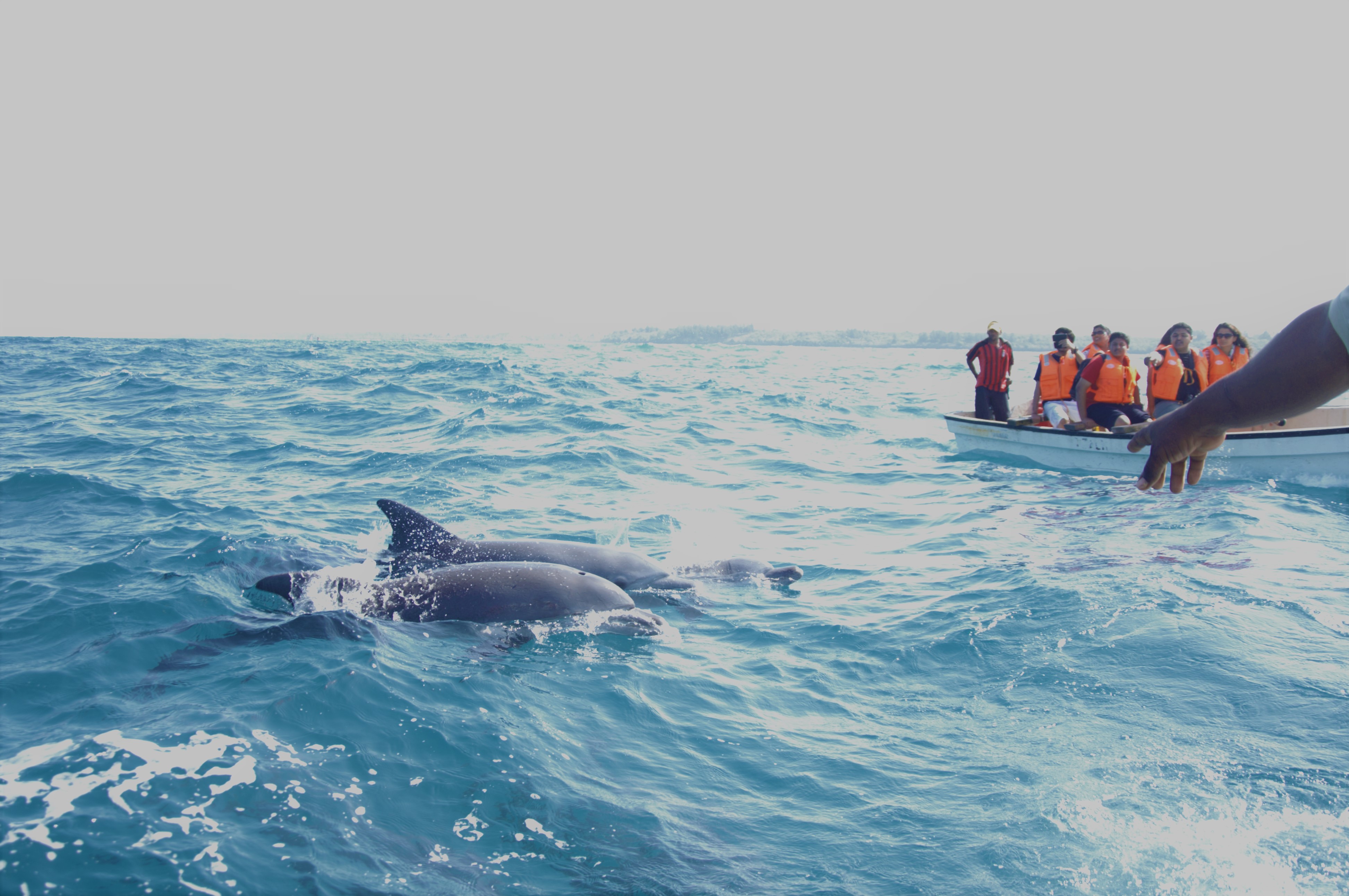The fate of dolphin tours in Hawaii has been a hot-button topic in the islands for years. But, now the National Oceanic and Atmospheric Administration (NOAA) has put pen to paper and is proposing a ban that would, effecively, end the tours. Now, YOU have the opportunity to comment on the proposed ban and become part of the discussion that could ultimately end dolphin tours in Hawaii.
But, first, a little background on the debate:
For years, agencies and animal advocacy groups have tried to implement a ban on dolphin tours, especially those that allow guests to directly interact with dolphins. Now, the issue has come front-and-center again.
According to The Garden Island newspaper, the NOAA and interested parties gathered recently on Kauai to discuss the ban. It was one of several meetings hosted by the NOAA Fisheries Department to air-out proposed rules on dolphin interaction.

About 40 people gathered on Kauai to talk about the proposed rules.
“We’re all here to talk about the problem we’re starting to see,” Jean Higgins of the National Oceanic and Atmospheric Administration Fisheries told the paper. “Because these animals are so easy to access during the day people are taking advantage of that to get close to a group of spinner dolphins.”
So, what exactly is the NOAA Fisheries Department proposing?
The Garden Island newspaper reports the agency is proposing a ban within two nautical miles from shore that would keep humans at least 50 yards away from Hawaiian spinner dolphins — and that includes swimming, snorkeling, and boating.
According to the paper, the rules were proposed because dolphins are being harassed by tourists unloading from boats, mainly on the Big Island, into the sleeping habitat of the cetaceans.
Dolphins feed primarily at night, Higgins to the paper, and sleep through the morning and into the late afternoon. The large number of people in the water disturbs their rest and is against the federal Marine Mammal Protection Act law against the harassment of marine mammals, according to NOAA.
“These animals go offshore over night, they forge as a group and they’re feeding all night long,” Higgins told The Garden Island. “After the night is through they return to nearshore waters to rest during the day.”
Populations of dolphins change their residency patterns potentially due to the disturbances created by humans in their habitat, Higgins said, and NOAA is seeing the animals “use avoidance behavior to get away from people and boats.”
“The purpose is to clarify for people the types of activities that cause disturbance to spinner dolphins,” Higgins said. “We’re hoping to reduce chronic disturbance to spinner dolphins.”
However, there’s been quite a bit of pushback from opponents, who say the dolphins are in no danger from dolphin tours in Hawaii.
“You can’t swim with them without their cooperation,” Randy Roe, a resident of Wailua who is an avid snorkeler, kayaker and diver, told reporters. “I’ve been in the water with them and swam with them and if I thought I was harming them in any way, I wouldn’t do it.”
Members of the public also questioned the practicality of the potential law.

“If a dolphin comes up while I’m swimming, what am I going to do, swim away,” Roe asked. “I think ‘corralling’ is the key world. I’m totally against chasing them down and herding them into an area, but I’ve actually never seen that happen.”
If there’s any question about the safety of dolphin tours in Hawaii, keep in mind that whale watching tours, shark adventures, and dolphin encounters also offer the chance to interact with marine life.
Whether you’re for or against the proposed rules, YOU now have the chance to comment and be part of the discussion. The public has the opportunity to comment on the NOAA draft environmental impact statement on the potential regulation until Oct. 23 and those comments can be made electronically at www.regulations.gov/document?D=NOAA-2005-0226-0002 .




